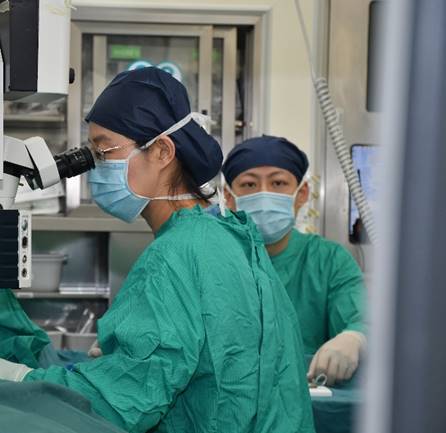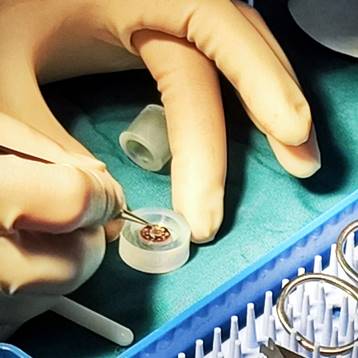Collar-button type Keratoprosthesis (KPA1) transplantation successfully rescued a patient’s visual acuity on February 4, 2023. The operation was performed by Dr. Li Li and her team from Department of Ophthalmology, the First Affiliated Hospital of Xi 'an Jiaotong University (XJTU).

One year ago, caustic alkali accidentally splashed into the eye of the patient. Emergency treatment and amniotic membrane transplantation were performed in a local hospital, but the burning and souring sensation in his right eye was not significantly eased. Then, he was immediately transferred to the First Affiliated Hospital of XJTU for further treatment. Ocular examination showed limited eye movement, entropion of the upper and lower eyelids, yellowish-white secretion from the conjunctival sac, symblepharon, constriction of conjunctival sac, corneal dissolution, and scleral exposure of the lower limbus in the right eye. The patient received multiply operations in the hospital, including amniotic membrane transplantation, blepharoplasty, conjunctival sac plasty. Postoperatively, he was well recovered. However, corneal perforation occurred. Subsequently, he received total corneal transplantation. Then, anti-inflammation, anti-infection and anti-rejection drugs were used.

Considering medical history, signs and related examinations, the teamfrom Department of Ophthalmology finally selected artificial cornea as the optical material to restore the visual acuity.
After consultation with the professors from Beijing Tongren Hosptial, collar-button type KPA1 was selected by ophthalmologists in orderto restore the visual acuity of the patient. On February 4, 2023, after informed consent was obtained from the patient, Professor Li Li performed the operation with her team. Amazingly, the visual acuity was improved to 0.15 on the first postoperative day.
The operation is the first case of collar-button type KPA1 transplantation in our hospital.